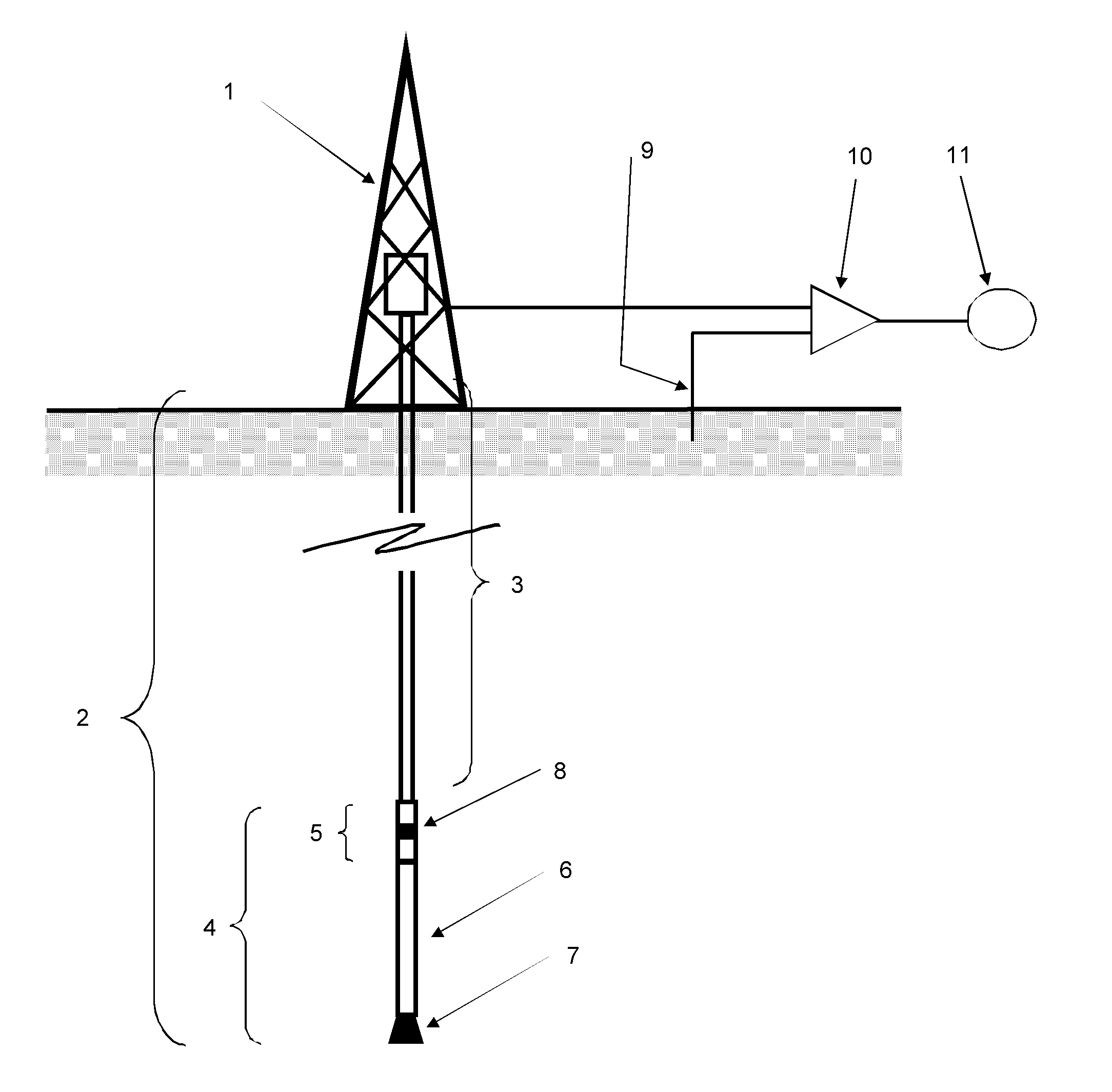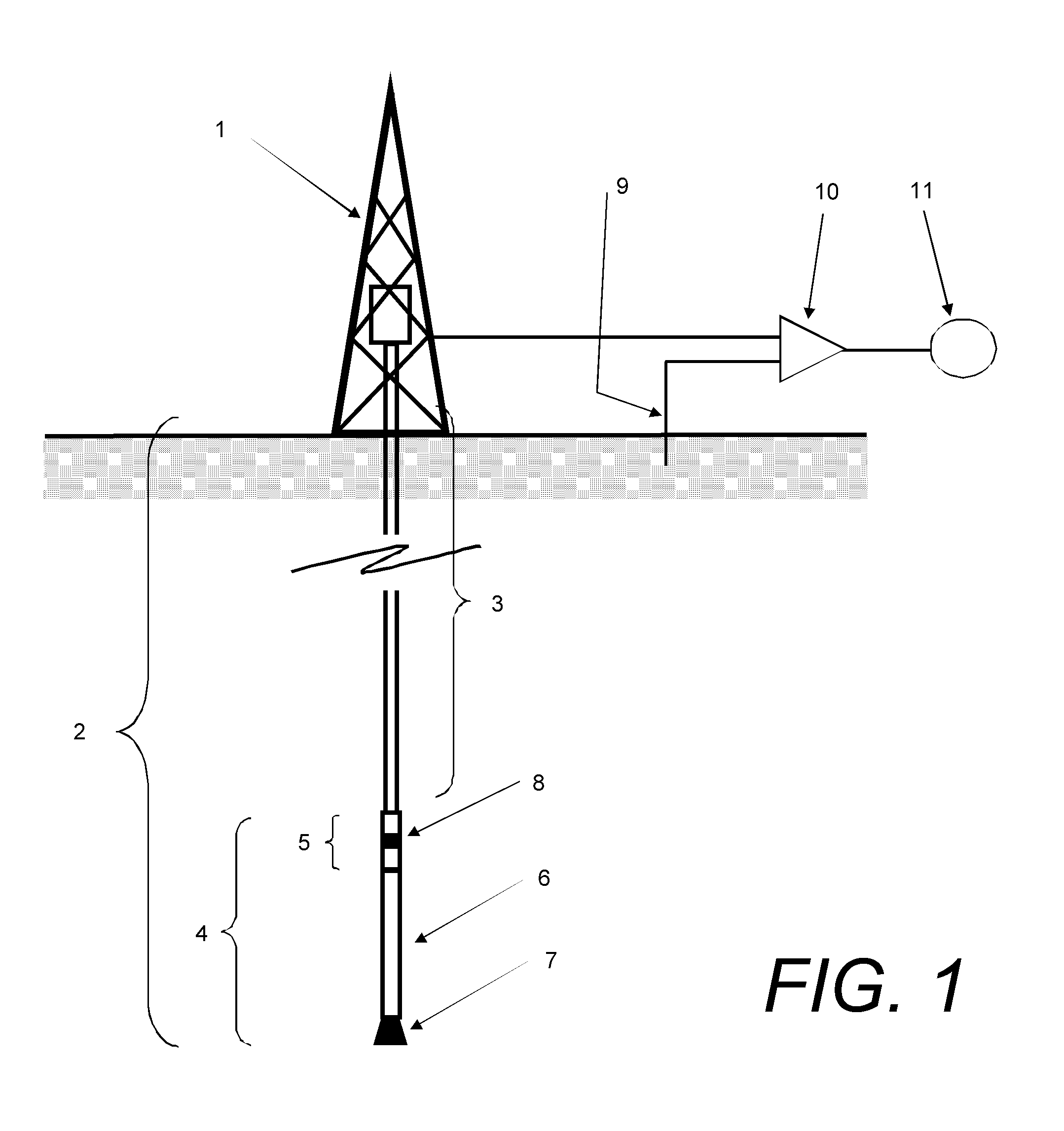Tapered thread em gap sub self-aligning means and method
a technology of self-aligning and tapered threads, applied in the field of telemetry apparatus, can solve the problems of poor performance of early gap sub designs and their precursors, poor structural integrity of gap subs, and electrolytic corrosion of such pipes, and achieve the effect of improving the manufacturability of tapered thread gap sub designs and high strength
- Summary
- Abstract
- Description
- Claims
- Application Information
AI Technical Summary
Benefits of technology
Problems solved by technology
Method used
Image
Examples
Embodiment Construction
[0029]FIG. 1 is a simplification of a typical drilling rig employing an EM telemetry method of transponding drilling parameters from downhole to surface. The derrick 1 supports and drives the jointed pipe drill string 2 that is required to drill a well. The drill string comprises a number of tubular members (drill pipes 3) and a bottom hole assembly (BHA) 4. The BHA 4 in this embodiment comprises an EM gap sub and telemetry device 5, a mud motor 6 and a drill bit 7. As the mud motor 6 rotates the drill bit 7 and the well progresses it is necessary to record various drilling parameters to help the driller safely guide the well. These parameters are gathered and encoded onto an EM carrier that is electrically produced across the insulation gap 8 of the EM gap 5. A tiny fraction of this signal is detected at the surface by the measuring the signal formed between the rig's derrick 1 and a surface antenna 9 located in the ground some distance away (typically about 50 m, dependent on surf...
PUM
 Login to View More
Login to View More Abstract
Description
Claims
Application Information
 Login to View More
Login to View More - R&D
- Intellectual Property
- Life Sciences
- Materials
- Tech Scout
- Unparalleled Data Quality
- Higher Quality Content
- 60% Fewer Hallucinations
Browse by: Latest US Patents, China's latest patents, Technical Efficacy Thesaurus, Application Domain, Technology Topic, Popular Technical Reports.
© 2025 PatSnap. All rights reserved.Legal|Privacy policy|Modern Slavery Act Transparency Statement|Sitemap|About US| Contact US: help@patsnap.com



